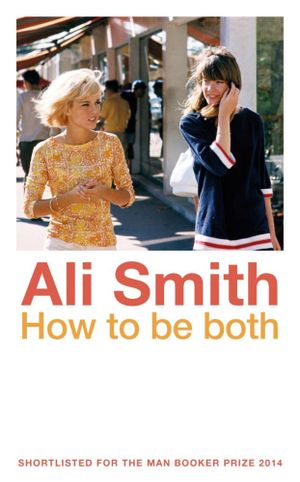How to Be Both by Ali Smith
(Hamish Hamilton)
Pp. 371
This ambitious novel twists strands of tales together like the DNA
double helix molecule that symbolises the story. The first half concerns
Francesco del Cossa in an out of body experience – she may be dead, but she
doesn’t remember dying; perhaps this is purgatory? She is drawn to a girl who
is looking at her painting in an art gallery. The second half concerns George,
the girl from the gallery, trying to cope with the death of her mother, Carol,
who became obsessed with the unknown painter of frescoes in Ferrara, Italy and
took her daughter there to see them in situ.
The halves of the novel are both numbered One; half of the books are
printed with George’s story first and Francesco’s second. They can be read in
either order because everything is connected, and all things overlap. Sitting
in an Italian piazza and discussing the prevalence of over-painting images,
George’s mother asks her, “Which came first? The
chicken or the egg? The picture underneath or the picture on the surface?”
George says the picture underneath, of course. “But the first thing we see, her
mother said, and most times the only thing we see, is the one on the surface.
So does that mean it comes first after all? And does that mean the other
picture, if we don’t know about it, may as well not exist?”
These
palimpsests become a metaphor for life. Francesco is really a girl, but
disguised as a boy so that she can have a career as an artist. Pictures record
things past their death; they capture immortality. Carol was an art activist, “It
was her job to subvert political things with art things, and to subvert art
things with political things.”
After her mother’s death, George feels as though her
life has been split into two entirely separate halves. “That before and after
thing is about mourning, is what people keep saying.” She discovers a woman
with whom Carol had a relationship, and George stalks and photographs her every
day. She recalls how her mother used to think she was being spied upon and
‘Minotaur-ed’; was she just being paranoid? Or is this the self-enveloping
effect of time’s continuum? Both art and surveillance involve watching and
being watched, and there is always more going on than meets the eye. Carol
taught George, “Nothing’s not connected. And we don’t live on a flat surface.”
History is ever-present and the weight of all this connectivity can be
oppressive.
The novel is a complex work of meaning and metaphor: a
classic story of love and loss, told in a fresh and modern way. Both genre and
gender bending, this is a work of parallel universes, palimpsests, fluid time
and space, paranoia and mystery – almost too clever by half, and certainly
challenging, but definitely memorable.

No comments:
Post a Comment